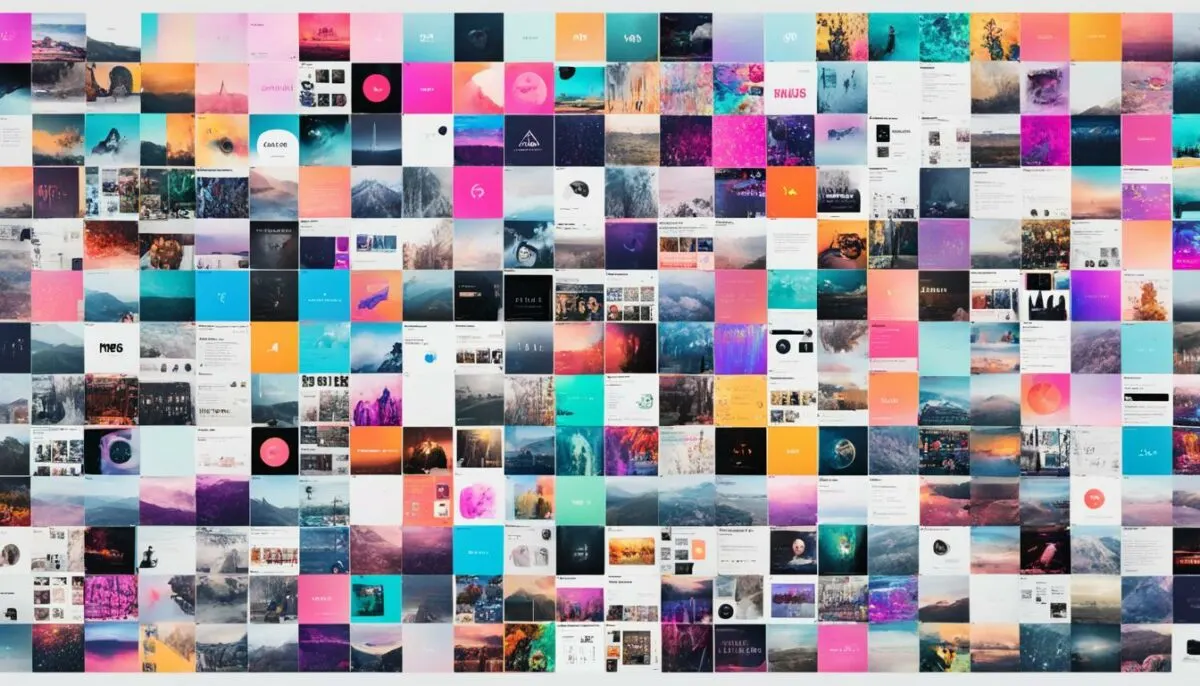When it comes to music streaming services, Apple Music and Spotify are two major players that offer a wide range of features and a vast catalog of songs. Both platforms have their unique strengths and weaknesses, making it difficult for users to determine which one is the best fit for their music needs. In this article, we will compare Apple Music and Spotify to help you make an informed decision.
Key Takeaways:
- Apple Music and Spotify are leading music streaming platforms with their own strengths and weaknesses.
- Apple Music offers superior sound quality and seamless integration with the Apple ecosystem.
- Spotify excels in music discovery and social sharing.
- The choice between Apple Music and Spotify ultimately depends on individual preferences and needs.
- Consider factors such as high-quality audio, personalized playlists, and user interface when making a decision.
Music Catalog
When comparing the music catalogs of Apple Music and Spotify, both services claim to offer over 100 million songs. However, based on personal experience, Apple Music seems to provide a more extensive selection, especially when it comes to older albums, compilations, and artists who have recently chosen to remove their music from Spotify.
Most users may not notice a significant difference in availability between the two platforms. While Spotify does offer exclusive “Spotify sessions,” Apple Music counters with its own unique content as well. In terms of availability, there is a slight bias towards Apple Music, but overall, the comparison results in a draw.
To give you a visual perspective, here is a breakdown of the music catalog comparison between Apple Music and Spotify:
| Apple Music | Spotify |
|---|---|
| Extensive selection of older albums | Comprehensive library of popular artists |
| Diverse range of compilations | Exclusive “Spotify sessions” |
| Availability of music removed from Spotify | Unique content offerings |
As you can see, both Apple Music and Spotify have their strengths in terms of their music catalogs. It ultimately comes down to individual preferences and the specific content each platform offers.
Note: For a better understanding of the topic, have a look at the image below:
Mobile App Design
When it comes to mobile app design, Spotify and Apple Music take divergent approaches to cater to their users. Apple Music boasts a visually appealing and intuitive interface, characterized by a clean design and captivating UI elements. The upcoming iOS 17 update is set to enhance the mobile experience, promising even greater delight for Apple Music users. On the other hand, Spotify’s mobile app can be described as more chaotic, marked by frequent changes and inconsistent addition or removal of features.
Despite the differences, both apps have their unique strengths and weaknesses. One area where Spotify excels is music queuing, offering seamless management of playlists and a seamless transition between tracks. In contrast, Apple Music’s desktop app shines with power-user features like “smart playlists,” enabling users to curate their music experience with precision.
One aspect that has been a major deterrent for me with Spotify is the lack of customization options. Unlike Apple Music, which allows users to personalize their experience, Spotify falls short in this regard. Having the ability to customize and tailor the app to my preferences adds an extra layer of enjoyment that Spotify currently lacks.
Ultimately, mobile app design plays a crucial role in enhancing the user experience. While both Spotify and Apple Music have their merits, the choice between the two depends on personal preferences and priorities when it comes to ease of use, feature availability, and customization options.
Desktop App
While both Apple Music and Spotify offer desktop apps for seamless music streaming, there are notable differences in their performance and user experience.
Spotify’s desktop app has long been praised for its speed, responsiveness, and cross-platform compatibility. Whether you’re using Windows, macOS, or Linux, Spotify provides a consistent and optimized experience. The app’s intuitive design and smooth navigation make it easy to browse through your music library, create playlists, and discover new songs.
On the other hand, Apple Music’s desktop app is built on top of the pre-existing iTunes app, which has received mixed reviews over the years. Despite recent efforts to improve its performance and make it more system-native, the macOS version of Apple Music still feels clunky compared to its iOS and iPadOS counterparts. The app can be slow and prone to lag, affecting the overall user experience.
Although Apple Music has made strides to enhance its desktop app, Spotify’s advantage in terms of speed and responsiveness remains prominent. Whether you’re a power user who relies heavily on desktop streaming or simply prefer a smoother interface, Spotify’s desktop app is a solid choice.
Comparing the Desktop Apps
| Criteria | Spotify | Apple Music |
|---|---|---|
| Speed | Fast and responsive | Somewhat slow and clunky |
| Design | Intuitive and visually appealing | Less user-friendly, inherits drawbacks from iTunes |
| Compatibility | Cross-platform availability | Primarily optimized for macOS |
| Features | Wide array of features, seamless integration with Spotify’s ecosystem | Power-user features available, but lacks the smoothness of the mobile apps |
While Apple Music has made efforts to improve its desktop app, Spotify’s consistent performance and user-friendly design give it the edge when it comes to desktop streaming. However, if you primarily use Apple devices and value tight integration within the Apple ecosystem, Apple Music’s desktop app may still be a viable option despite its drawbacks.
Sound Quality

In terms of audio quality, Apple Music stands out as the clear leader in the streaming space. With a focus on delivering an impeccable listening experience, Apple Music offers outstanding sound quality options that elevate your music streaming journey.
One of Apple Music’s key advantages is its support for lossless audio streaming, which provides an uncompressed format akin to the CD listening experience. This means you can enjoy your favorite songs with unparalleled clarity and depth, as if you were in the recording studio with the artist.
But Apple Music takes audio quality to new heights by also offering hi-res lossless streaming for select albums. With the right hardware, these albums deliver an even more superior sound quality than traditional CDs, allowing you to immerse yourself in the lush intricacies of the music.
Another standout feature of Apple Music is Dolby Atmos, which they brand as “Spatial Audio.” This immersive audio technology creates a three-dimensional sound experience, giving you the feeling of being surrounded by the music. It adds an extra layer of depth and detail to your favorite tracks, making them come alive in a whole new way.
Both lossless audio and Dolby Atmos come included with your Apple Music subscription at no additional charge, providing a premium audio streaming experience without any extra cost.
On the other hand, Spotify offers a maximum audio quality of “approximately 320kbit/s” for premium users. While this is still a decent audio quality, it falls short when compared to Apple Music’s superior sound options. Spotify may be a great choice for casual listeners, but for audiophiles and those who truly appreciate high-fidelity sound, Apple Music undoubtedly takes the crown.
Pricing

When it comes to pricing, both Apple Music and Spotify offer a range of options to suit different budgets and needs. Let’s take a closer look at what each service has to offer:
| Service | Free Tier | Premium Subscription Plans | Additional Benefits |
|---|---|---|---|
| Apple Music | No |
|
Access to Apple TV+ |
| Spotify | Yes, with ads |
|
Partnerships with other services like Hulu |
Apple Music offers a three-month free trial for new users, allowing them to explore the service without any commitment. Spotify, on the other hand, provides a free tier that lets users listen to music with occasional advertisements. Both services have competitive pricing for their premium subscription plans, with options for individuals, families, and students.
While Apple Music offers additional benefits such as access to Apple TV+, Spotify has partnerships with other services like Hulu, providing added value to its subscribers.
Playlists and Recommendations

Both Apple Music and Spotify offer a vast collection of songs, advanced personalization features, and similar subscription models. The key differentiating factor lies in their approach to playlists and recommendations.
Spotify: Personalized Mixes and Algorithmic Playlists
Spotify boasts a reputation for its superior recommendation algorithm, which tailors personalized mixes and algorithmic playlists specifically to each user’s taste. By analyzing user behavior, listening habits, and preferences, Spotify’s algorithm creates curated playlists that cater to individual music discovery, making it easier to find new favorite songs and artists.
Apple Music: Human-Curated Playlists and Unique Content
On the other hand, Apple Music emphasizes human curation to craft playlists that highlight unique content and showcase the expertise of music editors. With handpicked tracks and artist-driven playlists, Apple Music provides a more curated experience, offering value to users seeking more than just an extensive music library. It aims to introduce listeners to new music through carefully crafted lists, providing a different approach to music discovery.
“Both services offer distinct approaches to playlists and recommendations, catering to different preferences and music exploration methods.”
Ultimately, the choice between Apple Music and Spotify in terms of playlists and recommendations depends on individual taste and preferences. Some users may prefer Spotify’s personalized mix and algorithmic playlists for their ability to uncover new music based on personal listening habits. Others may appreciate Apple Music’s human-curation approach and desire to discover unique content through curated playlists. It’s all about finding the best fit for your music discovery journey.
Comparison Table: Playlists and Recommendations
| Spotify | Apple Music | |
|---|---|---|
| Algorithmic Playlists | ✅ | ❌ |
| Personalized Mixes | ✅ | ❌ |
| Human-Curated Playlists | ❌ | ✅ |
| Unique Content Highlights | ❌ | ✅ |
Note: ✅ indicates the presence of the feature and ❌ indicates the absence of the feature.
UI and App Experience
When it comes to user interface and app experience, both Apple Music and Spotify cater to different needs and preferences.
Apple Music’s apps are designed to excel on Apple platforms, providing a seamless and feature-rich listening experience for Apple device users. The user interface is intuitive and visually appealing, offering easy navigation and access to a wide range of features. With its deep integration into the Apple ecosystem, Apple Music seamlessly syncs across devices and offers a consistent experience for users who primarily use Apple devices.
On the other hand, Spotify adopts a user-friendly, cross-platform design that works well on a wide range of devices, including non-Apple ones. The Spotify app offers a clean and modern interface, making it easy to discover music, create playlists, and explore various genres. Its design focuses on simplicity and ease of use, allowing users to quickly access their favorite songs and playlists regardless of the device they’re using. This cross-platform compatibility makes Spotify a popular choice for users who prefer flexibility and access across different devices.
Ultimately, the choice between Apple Music and Spotify in terms of UI and app experience depends on whether you’re primarily using Apple devices or have a preference for cross-platform compatibility. If you’re deeply integrated into the Apple ecosystem and value a seamless user experience, Apple Music’s app design is likely to meet your needs. However, if you prioritize cross-platform compatibility and a user-friendly interface that works well on various devices, Spotify’s app design is worth considering.
Comparison of UI and App Experience
| Apple Music | Spotify | |
|---|---|---|
| UI Design | Seamless and feature-rich on Apple platforms | Modern and user-friendly, works well on different devices |
| Integration | Deep integration into Apple ecosystem | Cross-platform compatibility |
| Navigation | Intuitive navigation, easy access to features | Simplified navigation, quick access to songs and playlists |
| Flexibility | Optimized for Apple devices | Works well on a wide range of devices |
Table: A comparison of UI and app experience between Apple Music and Spotify
Unique Features

Both Apple Music and Spotify offer unique features that cater to different preferences. The choice between the two services in terms of unique features depends on individual preferences and the specific functionalities that appeal to each user.
Apple Music introduces the Sing feature, which allows users to view song lyrics in a karaoke-style UI, enhancing the listening experience. Whether you’re belting out your favorite tunes or just want to follow along, Apple Music’s Sing feature adds an interactive element to your music sessions.
On the other hand, Spotify offers a range of additional functionalities to enhance your music streaming experience. One notable feature is Spotify Connect, which allows you to easily control music playback on other devices. Whether you’re listening on your phone and want to switch to a smart speaker or want to control the music playing on your computer from your mobile device, Spotify Connect simplifies cross-device control.
Another unique feature of Spotify is the ability to create collaborative playlists. Collaborative playlists enable you to create shared playlists with friends, family, or colleagues. You can all add your favorite songs, creating a collaborative music collection that reflects everyone’s musical tastes.
Ultimately, the choice between Apple Music and Spotify’s unique features comes down to individual preferences. If karaoke-style lyrics and an interactive UI appeal to you, Apple Music’s Sing feature is a standout. On the other hand, if you prioritize cross-device control and the ability to collaborate on playlists, Spotify’s additional functionalities set it apart.
Conclusion
In conclusion, when comparing Apple Music and Spotify, it’s clear that both are leading music streaming services with their own unique strengths and weaknesses. Apple Music stands out with its superior sound quality, offering lossless streaming, hi-res audio, and Dolby Atmos for an immersive listening experience. Additionally, Apple Music seamlessly integrates with the Apple ecosystem, making it a convenient choice for iPhone, iPad, and Mac users.
On the other hand, Spotify shines in music discovery and social sharing. Its recommendation algorithm is widely regarded as one of the best in the industry, creating personalized mixes and algorithmic playlists tailored to individual preferences. Spotify also excels in cross-platform compatibility, ensuring a consistent and user-friendly experience on different devices.
Ultimately, the decision between Apple Music and Spotify boils down to personal preferences. If you prioritize high-quality audio and exclusive content, Apple Music is the way to go. For those who value music discovery, social sharing, and cross-platform compatibility, Spotify is a strong contender. It’s recommended to try both services and choose the one that best aligns with your individual needs and preferences.
FAQ
How do Apple Music and Spotify compare in terms of their music catalogs?
Both services claim to offer “over 100 million songs,” but Apple Music seems to have a more extensive selection, particularly when it comes to older albums, compilations, and artists who’ve removed their music from Spotify.
What are the differences in mobile app design between Apple Music and Spotify?
Apple Music has a clean and beautiful interface with appealing UI elements, while Spotify’s app can be described as chaotic. Apple Music excels in design and upcoming iOS 17 updates promise a delightful mobile experience.
How do the desktop apps of Apple Music and Spotify compare?
Spotify’s desktop app is known for its speed, responsiveness, and cross-platform availability, while Apple Music’s desktop app is built on the clunky foundation of iTunes. However, recent improvements by Apple have narrowed the gap.
What is the difference in sound quality between Apple Music and Spotify?
Apple Music offers lossless streaming and hi-res lossless options, along with Dolby Atmos for a superior audio experience. Spotify offers a maximum audio quality of approximately 320kbit/s for premium users.
How do the pricing structures of Apple Music and Spotify differ?
Both services offer similar pricing structures, with free, ad-supported tiers and various individual, family, and student plans. Apple Music includes additional benefits like access to Apple TV+, while Spotify has partnerships with other services like Hulu.
How do Apple Music and Spotify compare in terms of playlists and recommendations?
Spotify excels in music discovery with better personalized mixes and algorithmic playlists, while Apple Music focuses on human-curated playlists and unique content, catering to those seeking more than just a vast music library.
How do the user interface and app experience of Apple Music and Spotify differ?
Apple Music provides a seamless and feature-rich experience on Apple devices, while Spotify has a user-friendly, cross-platform design that works well on a wide range of devices.
What are some unique features offered by Apple Music and Spotify?
Apple Music offers features like its Sing feature for viewing song lyrics and Dolby Atmos for a spatial audio experience. Spotify offers Spotify Connect for controlling music playback on other devices and collaborative playlists.
Which music streaming service is better overall, Apple Music or Spotify?
The choice between Apple Music and Spotify ultimately depends on individual preferences, such as sound quality, personalized playlists, or specific user interface preferences. It is recommended to try both services and choose based on personal experience and needs.